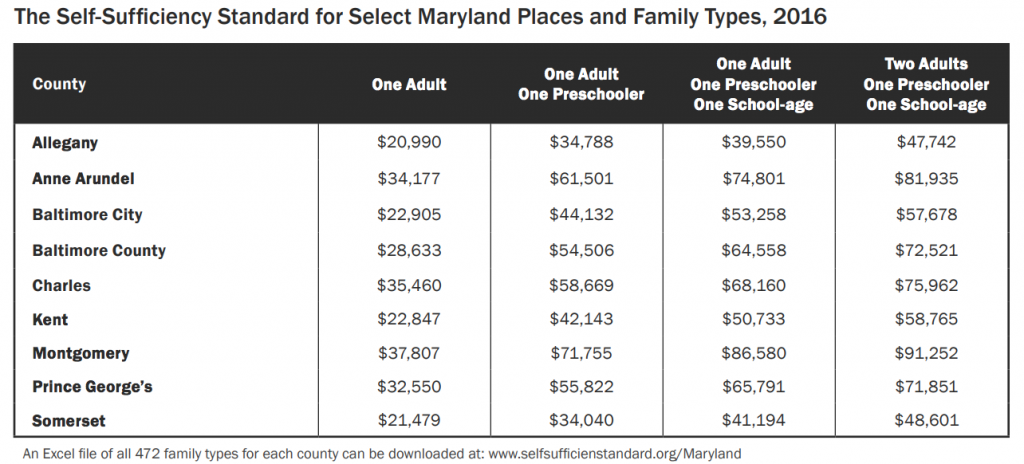The Minimum Wage Should be Set Locally. One Chart Shows Why.
“I helped enact a minimum wage increase as a legislator in Annapolis,” writes Delegate Bill Frick. “Minimum wage policy, however, is more effective as a state policy than as a local one.”
Thus we infer that Mr. Frick opposes Montgomery County legislation that would phase in a $15 county minimum wage. Bill 28-17 is due for County Council vote this Tuesday, November 7, and I hope it is enacted.
Mr. Frick’s argument is a misdirection. “More effective” isn’t a consideration because a 2016 state Fight for Fifteen bill, HB 1372, failed to even make it out of committee, and I know of no plans for reintroduction in the next year’s election year legislative session. So Maryland’s minimum will ascend no higher than the $10.10 level Mr. Frick supported in 2014. And “more effective” will remain an abstraction, like saying that a six-legged horse could run faster than one that actually exists.
Why won’t the Maryland General Assembly raise the state minimum? I’d surmise because much of the state has a far lower cost of living than Montgomery County’s.
Let’s look at the data, in particular a measure called the Self-Sufficiency Standard, “how much income families of various sizes and compositions need to make ends meet at a minimally adequate level without public or private assistance.”
The 2016 self-sufficiency wage in Montgomery County, for a household of one adult, one preschooler, and one school-age child is $40.99. “A parent with two young children would still need to work over 155 hours per week in Montgomery County to make ends meet with a minimum wage job.” To support just herself, a single adult living in Montgomery County would need to work 63 hours per week at $11.50/hour, or 48+ hours at $15/hour.
Yet the self-sufficiency standard varies widely across Maryland. The chart below shows why legislators outside high-cost counties including Montgomery might see a higher minimum as less of a priority than we in Montgomery do:
 Montgomery County especially needs a higher minimum, but statewide action has failed. So Mr. Frick would let a specious search for “more effective” policy hold us back from needed local action.
Montgomery County especially needs a higher minimum, but statewide action has failed. So Mr. Frick would let a specious search for “more effective” policy hold us back from needed local action.
There are many precedents for local action in the face of state obstructionism. Here are three:
- The Charlotte, North Carolina non-discrimination ordinance that was nullified by the infamous North Carolina “bathroom bill.”
- Montgomery County policies that mandate police non-cooperation with federal immigration authorities, proudly in place despite the General Assembly’s failure to enact a Maryland Law Enforcement and Governmental Trust Act.
- Montgomery County’s Healthy Lawns Act restricting cosmetic lawncare pesticide use, enacted in the face of inadequate federal and state protections. (The county is preparing to appeal an adverse July court ruling that overturned the law based not on substance, but rather on supposed state preemption.)
A progressive stance says, if you can’t make progress at a state level, then enact locally, where you can pass a bill, as in these example. And don’t let a specious search for “more effective” policy hold you back from doing what’s right.